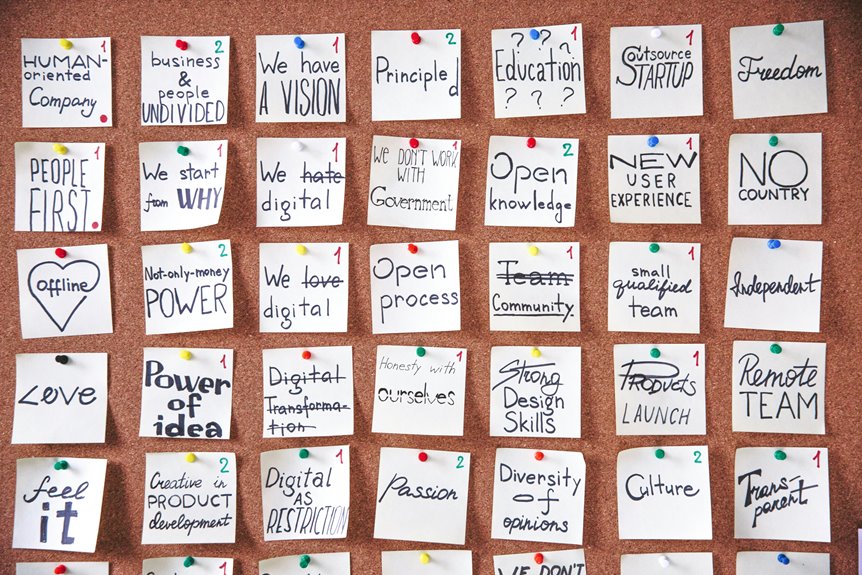Mastering Organizational Development 3896981159

The concept of mastering organizational development encompasses various strategies aimed at enhancing effectiveness within organizations. It emphasizes the need for alignment between values and structures to foster collaboration. Additionally, it addresses the challenges leaders face in managing change and resistance. By examining case studies and practical applications, insights emerge that can drive continuous improvement. However, the question remains: how can these insights be effectively applied to cultivate an adaptive environment?
Understanding Organizational Development
Organizational development (OD) serves as a systematic approach aimed at enhancing an organization’s overall effectiveness and health.
It fosters a positive organizational culture essential for cultivating change readiness. By strategically aligning values, practices, and structures, OD empowers individuals to embrace transformation collaboratively.
This approach not only motivates employees but also promotes an environment where innovation thrives, ultimately leading to sustainable organizational growth.
Key Concepts in Organizational Dynamics
Dynamics within organizations are influenced by a complex interplay of various key concepts that shape interactions and drive performance.
Organizational culture serves as a foundational element, fostering collaboration and innovation.
However, change resistance can hinder progress, as individuals may cling to established norms.
Understanding these dynamics enables leaders to navigate challenges and harness the potential for transformation, ultimately enhancing organizational effectiveness.
Practical Tools for Effective Change Management
Effective change management requires the integration of practical tools that facilitate smooth transitions and foster stakeholder engagement.
A change readiness assessment can identify potential resistance and readiness levels among employees.
Additionally, robust stakeholder communication ensures transparency and involvement, empowering individuals to contribute to the change process.
These tools collectively enhance organizational adaptability, promoting a culture of collaboration and freedom during transformative initiatives.
Real-World Case Studies and Applications
The examination of real-world case studies provides valuable insights into successful change initiatives, illustrating how strategic leadership development fosters organizational resilience.
By analyzing team dynamics through specific examples, organizations can identify best practices and common pitfalls in their development efforts.
This collaborative exploration emphasizes the importance of tailored approaches to enhance overall effectiveness in organizational change.
Successful Change Initiatives
While organizations often face resistance during periods of transformation, successful change initiatives can serve as powerful examples of strategic adaptation and resilience.
These initiatives emphasize stakeholder involvement, aligning diverse perspectives to overcome change resistance. By fostering collaboration and open communication, organizations can navigate complexities, ensuring that each member feels empowered to contribute towards collective goals, ultimately driving sustainable progress and innovation.
Leadership Development Examples
Numerous organizations have successfully implemented leadership development programs that foster strategic thinking and collaboration among their leaders.
These initiatives often incorporate diverse leadership styles, mentorship programs, and executive coaching to enhance emotional intelligence and conflict resolution skills.
Team Dynamics Case Studies
Effective leadership development programs often serve as a foundation for examining team dynamics within organizations. These case studies reveal insights into team collaboration and conflict resolution, showcasing strategies that enhance performance.
| Case Study | Key Insights | Outcomes |
|---|---|---|
| Tech Startup | Agile methods improve collaboration | Increased productivity |
| Non-Profit | Mediation techniques used | Enhanced team morale |
| Corporate Team | Open communication channels | Reduced conflicts |
Strategies for Fostering Continuous Improvement
To foster continuous improvement, organizations must prioritize employee engagement and the implementation of agile methodologies.
Engaging employees in decision-making processes not only enhances morale but also drives innovation and accountability.
Meanwhile, adopting agile practices enables teams to respond dynamically to changes, facilitating a culture of ongoing enhancement and adaptability.
Emphasizing Employee Engagement
While organizations strive for continuous improvement, the role of employee engagement emerges as a critical factor in achieving sustainable success.
Effective motivation strategies, complemented by robust recognition programs and clear communication channels, foster a positive workplace culture.
Implementing Agile Methodologies
As organizations seek to enhance their adaptability and responsiveness, adopting Agile methodologies becomes a strategic imperative for fostering continuous improvement.
Implementing agile frameworks enables teams to embrace iterative processes, allowing for rapid feedback and adjustments.
This collaborative approach not only empowers employees but also cultivates a culture of innovation, ensuring that organizations remain competitive and responsive in a dynamic environment.
Building Resilient Organizations in a Changing Landscape
In today’s rapidly evolving business environment, organizations face an array of challenges that demand resilience and adaptability.
Building resilient organizations requires strategic implementation of resilience training and fostering adaptive leadership.
Collaborative efforts in developing a culture of flexibility enable teams to navigate uncertainty effectively, encouraging innovation and empowerment.
Emphasizing these elements ensures organizations thrive amidst change, ultimately enhancing their capacity for sustainable success.
Conclusion
In conclusion, “Mastering Organizational Development” underscores the critical role of strategic alignment in enhancing organizational effectiveness. Notably, organizations that prioritize a collaborative culture report a 30% increase in employee engagement, illustrating the tangible benefits of fostering a positive environment. This resource equips leaders with the tools necessary to navigate and implement change effectively, ensuring that organizations not only adapt but thrive in a rapidly evolving landscape. Emphasizing continuous improvement and resilience is key to sustainable growth.



